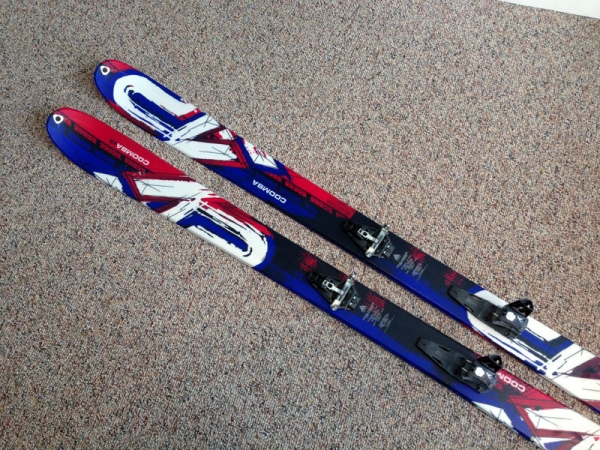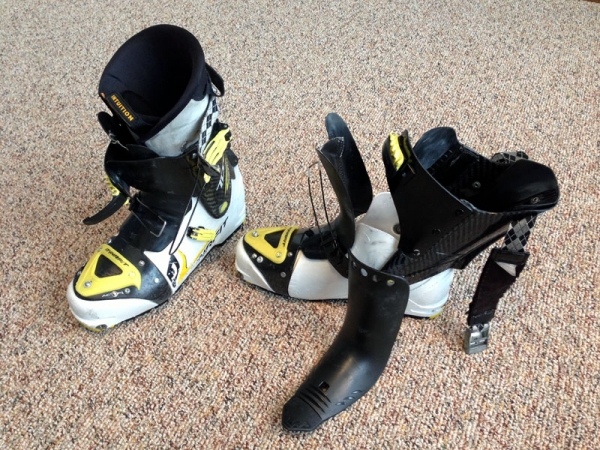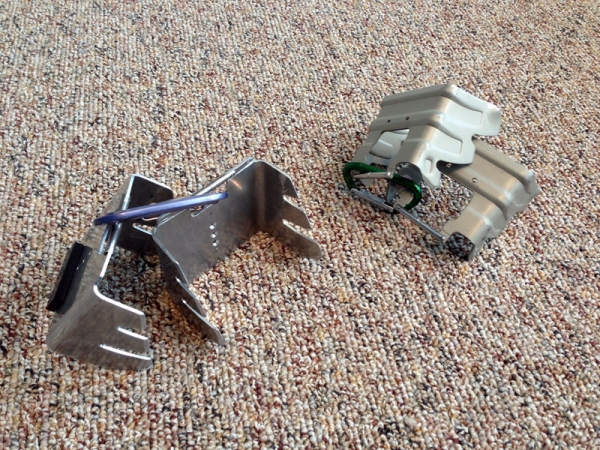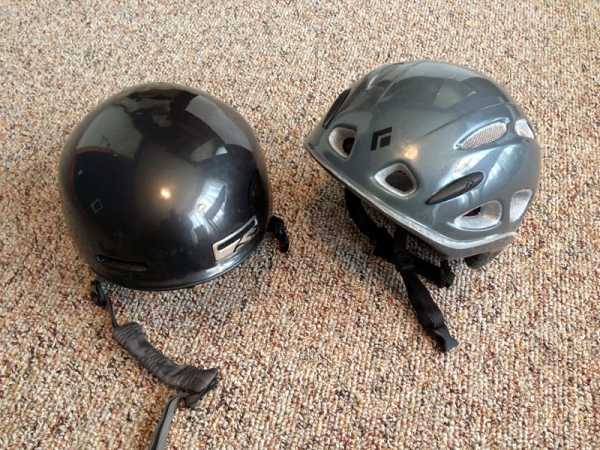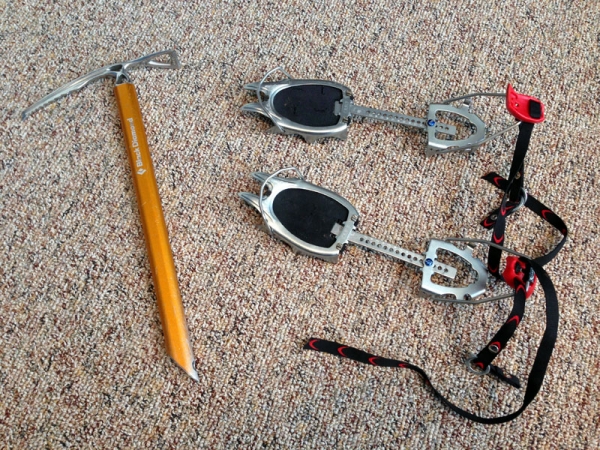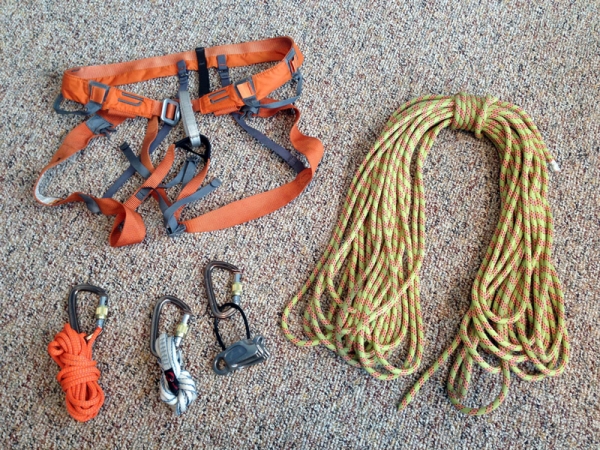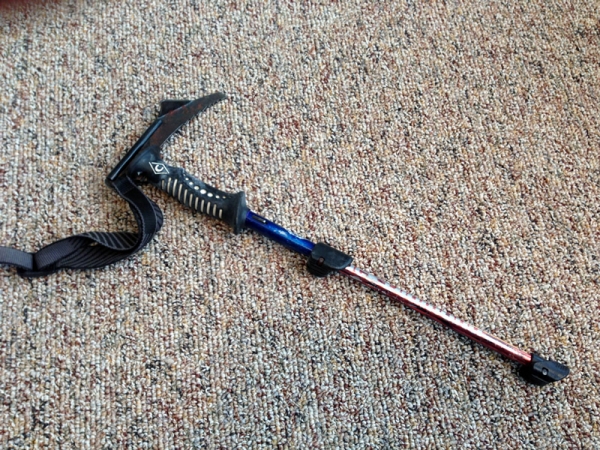Be sure to check out our latest version of this post updated for 2017!
While no one gets sick of skiing powder, when March rolls around our thoughts turn to bigger objectives – couloirs, steep faces, complicated high routes. And who can blame us, with the Sawtooth Range as our backyard.
Folks registering for our spring Ski Mountaineering Camps at the Williams Peak Hut always ask what gear they need. After all, ski mountaineering is a gear intensive activity. Although we provide a detailed equipment list, they specifically want to know what gear we use and recommend. So here you go…
We’ll start with the basics, then move on the more exciting stuff! First, skis.
Skis put the “ski” in ski mountaineering. Although most garden variety alpine touring and tele setups will work, if you get serious about ski mountaineering you’ll eventually gravitate towards something more specialized. But ask each of our guides what ski they prefer for steeper, technical skiing and you’ll get as many answers. But there are some rules of thumb.
- Width: 90-100mm is a great middle ground. Go narrower and you’ll sacrifice performance and fun in softer snow, go wider and firm snow becomes difficult and the weight increases.
- Length: Don’t be afraid to go a little shorter…they’re easier (and therefore safer) to ski on steep, technical descents, are lighter, and less obtrusive on your pack.
- Sidecut: Too much sidecut makes for a squirelly ski when jump turning.
- Design: Conservative is good. A bit of tip rocker is nice, but look for straightish tails – makes it easy to jam your skis in so they don’t take off without you, and also useful for building snow anchors.
Again, there are countless good ski mo planks out there, but the K2 Coomback is a time-tested classic. Reasonably light, great all around dimensions, straight tails, and a lightly rockered tip.
Ok, boots are something most of our guides can agree on. We have at least four guides using the carbon-cuffed Dynafit TLT5’s. These boots are one of the reasons “game changer” has become a cliche buzzword.
Most ski mountaineering, especially in the Sawtooths, entails a substantial approach followed by a challenging descent. The TLT5’s handle both with aplomb. Super light with ridiculous cuff articulation (see the photo, your ankle is the limiting factor), they make any approach easier. But pop in the removable tongue and they transform into a reasonably stiff ski boot that can handle aggressive terrain. Mine have close to 200 days on them and while they’re beginning to show a little slop and I replaced the stock liner, they’re not dead yet! Durability has been impressive, which is a good thing given their cost.
One often overlooked item are ski crampons. When you need them, you really need them. They’re super useful for skinning on frozen spring snow or hard wind hammered surfaces. Contrary to popular belief, they’re not for going straight up slopes but rather help you keep your edge while traversing or switchbacking firm snow on skins. Most bindings nowadays have specific ski crampons, but Voile sells a universal set that will work on any ski. Pictured above are two crampons made for Dynafit bindings – the ones on the left are made by B and D Ski Gear, and those on the right are made by Dynafit. The B and D crampons are cheaper and more readily available, while the Dynafits are lighter.
Protecting your noggin is always a good thing, and in ski mountaineering situations there are more things conspiring against cranial safety. Whether it’s rocks falling down a couloir, or you falling down a couloir, helmets are standard issue for technical skiing. The jury is still out on whether to use a ski or climbing helmet for ski mountaineering, and I tend to go back and forth. Ski helmets are heavier and less ventilated (i.e. hotter on the climb), but are more comfortable for skiing and interface better with goggles. The Smith Maze is the lightest ski helmet that I know of, weighing only 11oz. A climbing helmet is lighter and cooler, but I personally find them to be less comfortable and good luck with your goggles.
And moving on to sharp, pointy things. An ice axe and crampons seem to epitomize ski mountaineering, and carrying them seems to signal the difference between a gnarly day in the mountains and run of the mill backcountry skiing.
Since all this ski mo paraphernalia quickly adds up in weight, and we have to carry it up and down challenging terrain – Light is Right! We’re not climbing water ice or glacial neve, typically we just need a little extra security on steep and/or firm snow. If your objective necessitates ice tools and full steel crampons, you might want to reconsider your ability to ski down it!
One lightweight axe I really like is the Black Diamond Raven Ultra – it’s superlight yet has a strong steel head. It has a simple, elegant design. The Raven Pro is similar and only an ounce or two heavier. Shoot for something in the 12oz weight range, 50-60cm in length, and forget the leash.
Crampons are needed less frequently than an ice axe, so they spend a lot of time in your pack. A ton of weight can be saved with aluminum crampons. You sacrifice some durability (you don’t want to walk on rocks with them), but they weigh in at around a pound – about half that of full steel crampons. The Camp XLC390 is a classic lightweight aluminum crampon, and Black Diamond makes a slightly heavier version.
More technical ski objectives can require a rope, harness, and other specialized mountaineering equipment to perform belays and rappels. Again, all this stuff can begin to feel like an anchor in your pack, so keep it light and minimalist. Do your homework and bring only what you’ll need. Ski mountaineering doesn’t generate the same forces that regular climbing does, so we can get away with carrying a lighter rope. Most ski ropes are 30-40m, 8mm half or twin ropes. The Beal Rando is a classic choice.
A harness should be light, packable, and adjustable. Summer sport climbing harnesses may be light, but are bulky and may not adjust to fit over your winter layers. The Black Diamond Couloir came out a few years ago and has become the gold standard – weighing only 8oz, it has all the features you need for ski applications. The Camp Blitz is also another superlight option. The Camp Alp95 is the lightest harness known to man (4oz), but is less practical for everyday ski mountaineering.
Locking carabiners are more useful for ski objectives, and all or most of the carabiners I usually carry are lockers. The Black Diamond VaporLock only weighs 52grams, but is large enough to use for a Munter hitch. Belay devices can be eliminated with a Munter hitch but still have their place. When a scary pitch necessitates belayed skiing, a Black Diamond ATC allows rope to be pulled through with little friction but still provides stopping power on small diameter ropes.
People often ask about self-arrest ski poles such as the Black Diamond Whippet. While I often joke they make skiing more dangerous (don’t fall on it!) they do have their place. I’ll admit I don’t often use one, but they are nice as a climbing aid when used along side an ice axe. These things have definitely saved lives when people have stopped falls on hard snow, but I wouldn’t place an inordinate amount of faith in their stopping power.
By the way, we have nothing against snowboard mountaineers and much of this is still applicable. Some companies are making mountaineering-specific snowboard boots that have better soles for climbing and work better with crampons. Voile and others are making ski crampons for splitboards. Boot crampons will usually have to be the strap-on variety, and you’ll want to take your boots to the shop to ensure a good fit.
Well, that about covers the basics. Now go out and spend some of that hard earned money on gear, and we’ll see you in the Sawtooths this spring!


